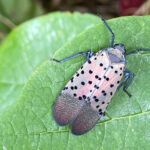How far can drones fly? The drone’s range depends on factors like battery, transmission, and legal restrictions, making it a complex question. Flyermedia.net is here to clarify the limits, capabilities, and considerations around drone flight range, ensuring you’re informed for safe and legal flights. This guide will cover legal regulations, types of drones and range and maximizing your drone’s potential.
1. Understanding Factors Affecting Drone Flight Distance
Several elements work together to define how far a drone can venture from its controller. While you might think the battery life and transmission range are the only factors, other aspects need to be considered to optimize drone flight.
1.1. Battery Capacity and Flight Time
Unsurprisingly, a drone’s battery life is critical in determining how far it can fly. Logically, one should fly only about half the battery’s duration away from the operator before turning back to ensure a safe return.
To be on the safe side, it’s wise to use less than half of the battery capacity for outbound travel, reserving the rest for the return journey and unexpected circumstances. Therefore, it is important to know how long the drone can fly on a full battery to maximize its distance.
1.2. Radio Signal Strength and Transmission Tech
A drone’s potential flight range depends on battery life and the strength of its signal.
Transmission technologies define the maximum distance for a stable connection. While Wi-Fi is convenient, its range is shorter and prone to interference. RC systems, common in prosumer and commercial drones, provide more stability and range, often spanning kilometers under ideal conditions.
Signal disruptions caused by structures, trees, or electronic devices can limit the effective range. Choosing a drone with robust transmission technology and considering the environment is essential for extended flights.
1.3. Impact of Weight and Drone Aerodynamics
The weight of the drone, along with any payloads such as cameras or sensors, significantly influences its flight range. Heavier drones need more power to stay airborne, quickly draining the battery. Keeping weight to a minimum without sacrificing functionality is essential for extending range.
Aerodynamics also play a vital role. Drones with streamlined designs have less air resistance, which allows them to fly more efficiently and cover longer distances. In contrast, bulky drones with poorly designed frames may struggle to maintain speed and stability, thus reducing their practical range.
1.4. How Weather Conditions Affect Flight Range
Wind, temperature, and altitude significantly affect a drone’s flight performance. Strong winds force the drone to use more energy to maintain course, which drains the battery faster. High altitudes reduce air density, affecting lift and propulsion.
Extreme temperatures also matter. Cold weather reduces battery efficiency, shortening flights. Excessive heat can cause overheating, limiting a drone’s range.
1.5. Intended Use: Matching Drone Type to Flight Range
The drone type you choose influences its flight range. Consumer drones, focused on ease of use and portability, usually offer ranges of 1 to 5 miles. Professional drones can reach 10 miles or more.
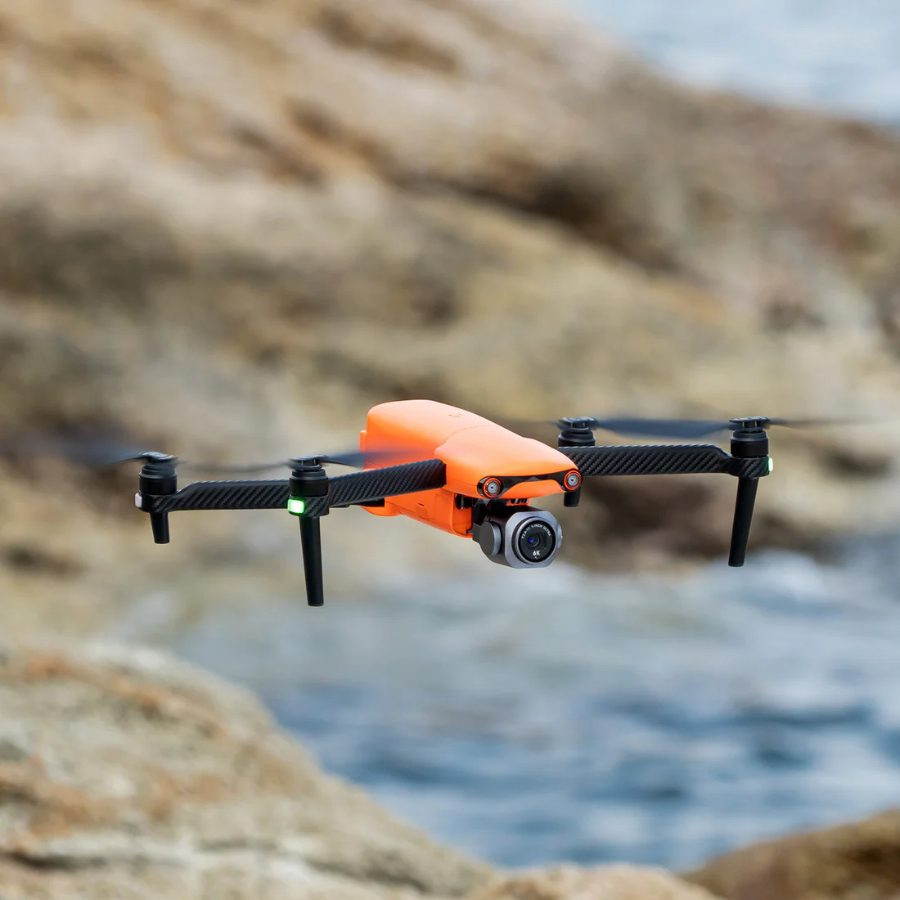 evo-lite-plus
evo-lite-plus
The Autel EVO Lite+ is a consumer drone designed for recreational use and easy flight
Consumer drones balance cost, ease of use, and moderate range, perfect for beginners and casual flyers. Prosumer drones meet demanding needs with enhanced performance, better camera systems, and extended flight ranges. Commercial drones are built for specialized applications that need exceptional reliability and range.
2. Drone Flight Range by Category
The range of a drone’s flight depends on its type, technological capabilities, and intended use.
2.1. Consumer Drones
Consumer drones are made for recreational use with features that make them easy to use.
These drones typically have a flight range of 1 to 5 miles (1.6 to 8 kilometers), which is suitable for casual photography and exploration. These drones balance cost, ease of use, and moderate range capabilities, which makes them ideal for beginners and casual flyers.
2.2. Prosumer Drones
Prosumer drones meet the demanding needs of enthusiasts and semi-professionals, with better camera systems and enhanced performance. These drones can travel 3 to 10 miles (4.8 to 16 kilometers) due to robust transmission systems and higher-capacity batteries.
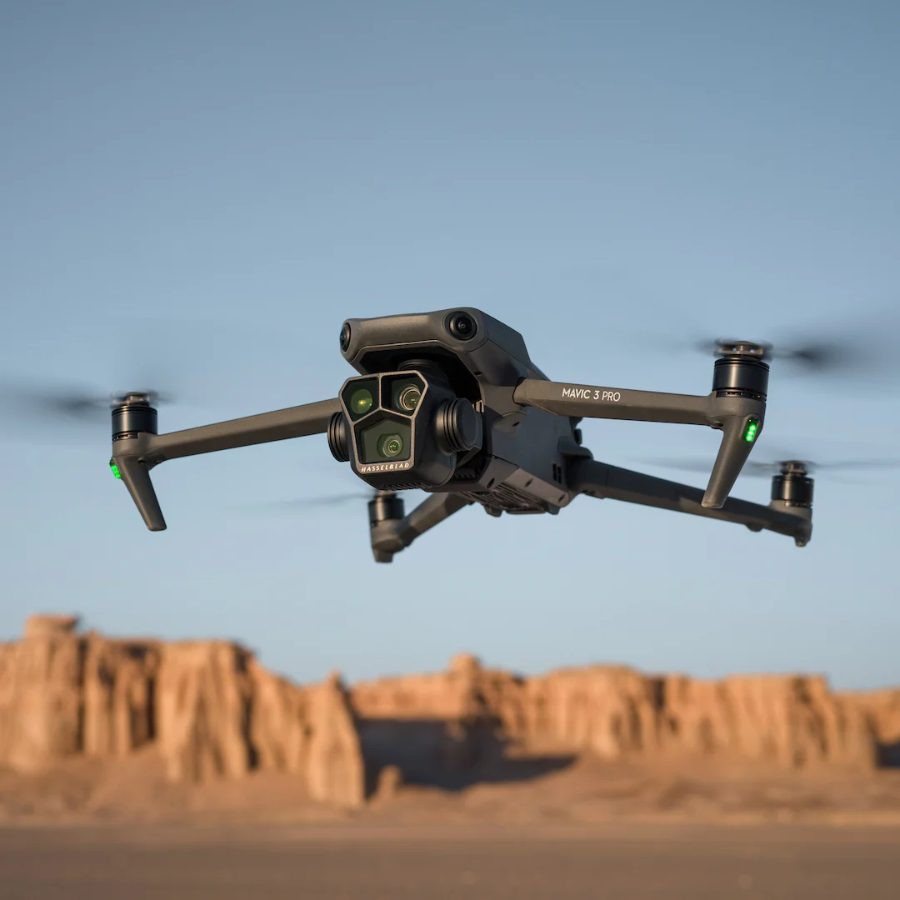 mavic-3-pro-flight-range
mavic-3-pro-flight-range
The DJI Mavic 3 Pro is a prosumer drone that offers advanced features for professional photography, videography, and commercial applications
Prosumer drones are great for pilots who require advanced features for professional photography, videography, and commercial uses like real estate inspections and survey mapping.
2.3. Commercial Drones
Commercial drones are designed for specific applications that demand exceptional performance and extended range.
These drones typically fly beyond 10 miles (16 kilometers) and feature advanced navigation systems, robust transmission technologies, and high-capacity batteries. This ensures stable operation over long distances.
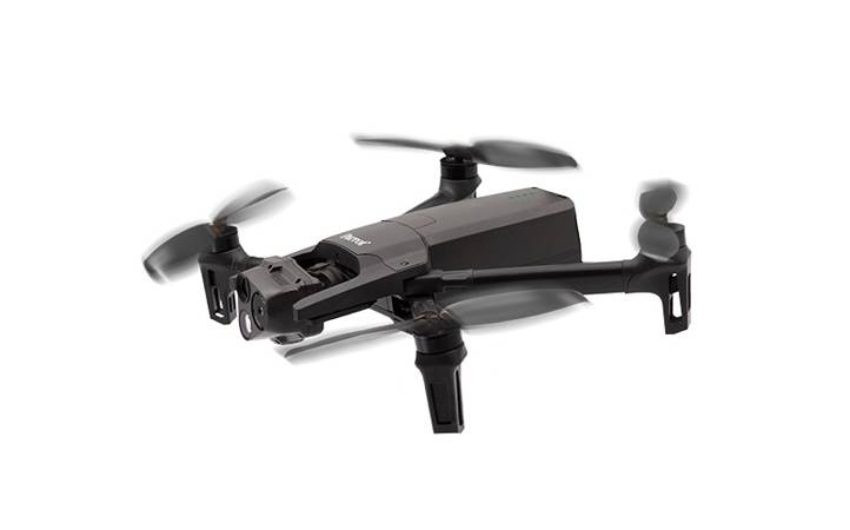 anafi-usa-flight-range
anafi-usa-flight-range
The Parrot ANAFI USA is a commercial drone equipped with specialized payloads and advanced features, making it suitable for infrastructure inspection, search and rescue, and surveying
Commercial drones can carry specialized payloads like high-resolution cameras, LiDAR sensors, and thermal imaging systems, making them essential for many industries. Some, like the DJI FlyCart 30, are heavy lift drones that can carry significant weight.
Drone Flight Range by Category
| Category | Typical Flight Range | Popular Models | Use Cases |
|---|---|---|---|
| Consumer Drones | 1 – 5 miles (1.6 – 8 km) | DJI Mini 3 Pro, Autel EVO Lite+ | Recreational flying, casual photography, travel |
| Prosumer Drones | 3 – 10 miles (4.8 – 16 km) | DJI Mavic 3 Pro, Autel EVO Pro 2 V3 | Professional photography, real estate, mapping |
| Commercial Drones | 10+ miles (16+ km) | DJI Matrice 350 RTK, Parrot Anafi USA | Infrastructure inspection, search and rescue, surveying |
*Note: Flight ranges can vary based on environmental conditions, battery performance, and signal interference. Check the manufacturer’s regulations and specifications before planning a flight.
3. Maximizing Drone Range: Practical Strategies
While there are built-in limitations to every drone, you can use several strategies to push the boundaries. Here are some practical ways to extend your drone’s flight range through optimized flight techniques, battery management, and signal enhancements.
3.1. Upgrading and Managing Drone Batteries
Upgrading to a higher-capacity battery is a great way to extend a drone’s range.
Batteries with higher mAh ratings offer more energy, which allows your drone to stay in the air longer. It’s important to make sure any battery upgrade works with your drone model to prevent potential safety issues.
Managing and maintaining your drone’s batteries significantly impacts performance.
Here are some tips for managing batteries well:
- Avoid deep discharges: Regularly draining the battery below 20% can reduce efficiency and lifespan. Aim to land when the battery reaches around 30% to maintain health.
- Store batteries well: Keep batteries in a dry, cool place, ideally at a 50% charge level, if not used for a while.
- Warm up before flying: Cold batteries don’t perform well, so warm the battery to around 77°F (25°C) before flying in cold conditions.
3.2. Strengthening Signal and Modifying Antennas
Signal strength is vital to your drone’s effective range.
If you lose connection with your drone, it will likely start a return-to-home protocol, which may limit your ability to use its battery life and range.
Here are some tips for improving signal transmission:
- Signal boosters: Signal boosters for your controller can strengthen transmission, which reduces signal loss and allows you to fly farther.
- Antenna modifications: Upgrading your drone or controller’s antenna can improve signal quality. Directional antennas focus the signal strength in a specific direction, which is ideal for long-distance flights. Omnidirectional antennas offer better coverage in all directions but with shorter range.
- Avoid interference: Try to stay away from areas with lots of electromagnetic interference, like urban environments with Wi-Fi networks or power lines. This can help maintain a stable and stronger connection.
3.3. Flight Techniques to Maximize Drone Distance
How you fly your drone affects its battery life and range.
Here are some tips to help:
- Smooth and steady flight patterns: Rapid acceleration, abrupt movements, and sudden stops can quickly drain the battery. Fly in smooth, controlled paths, and keep a consistent speed to maximize efficiency.
- Fly higher: Flying at higher altitudes can reduce signal interference from obstacles like trees or buildings. Make sure you stay within legal altitude limits and maintain visual line-of-sight with your drone.
- Monitor wind conditions: Flying against strong winds requires more power and reduces range. Plan your flight path to use tailwinds when flying long distances and avoid headwinds.
- Optimize payload: Extra weight, like added cameras or sensors, can shorten flight time. Remove unnecessary attachments when long range is your goal.
Combining these strategies can significantly extend your drone’s range, enabling more ambitious and longer flights.
4. Legal and Safety Considerations for Drone Flights
As mentioned earlier, your drone can fly much farther than the law allows. When considering how far a drone can fly, it’s important to understand the legal restrictions. Ignoring these rules can lead to fines, drone loss, or worse.
4.1 Visual Line of Sight (VLOS)
One of the primary FAA restrictions is the requirement to keep your drone within Visual Line of Sight (VLOS) at all times. This means the operator must see the drone without aids like binoculars throughout the flight. This is crucial for preventing collisions and ensuring control.
The FAA is developing new rules that may ease VLOS restrictions. Part 108 will be available for public comment by the end of 2024.
It is illegal to extend your flight range with an FPV system, even with a spotter. The pilot must see the drone with their own eyes.
4.2 Maximum Height Regulations
Flying far can mean flying high. Recreational and commercial drone pilots are capped at 400 feet above ground level (AGL). Flying above this height increases the risk of interfering with manned aircraft and complicates visual contact. Exemptions are available for commercial operations but require extensive documentation and FAA approval.
4.3 Safety Guidelines for Long-Range Flights
Long-range flights have potential safety risks, so keeping safety in mind is important. Always have a Return-to-Home (RTH) plan. Most modern drones have an RTH feature that guides the drone back to its takeoff point if the signal is lost or the battery is low. Ensure this function is active and the home point is set before takeoff.
Closely monitor battery levels throughout the flight. Plan your flight path to allow enough time to return home with a buffer, considering wind and power needs. Use a spotter if using FPV or flying where maintaining direct line of sight is hard. This is legally required in many cases and is a vital safety practice.
Signal interference can be caused by buildings, trees, and electronic devices. Fly in open areas and be aware of potential interference near urban environments or metal structures. Avoid flying over people and property. Long-range flights increase the risk of losing control, which can lead to crashes over populated areas.
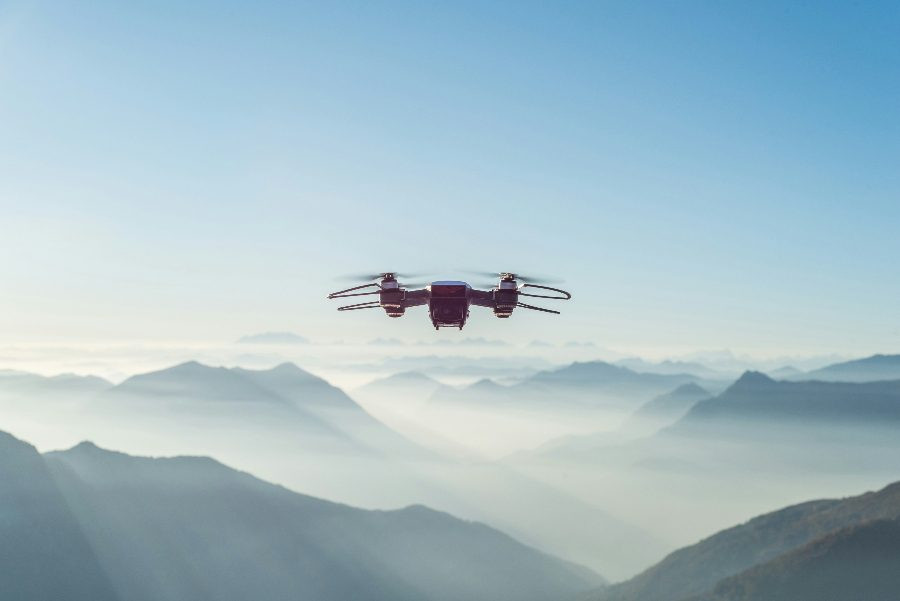 how-far-can-you-fly-a-drone
how-far-can-you-fly-a-drone
Drone operation requires awareness of legal restrictions and safety protocols to ensure compliance and prevent accidents
5. How Far Can You Fly a Drone FAQ
Here are some of the most common questions about how far you can fly a drone.
5.1. How far can you fly a drone?
The distance you can fly a drone depends on the type, battery life, and transmission technology. Consumer drones usually range from 1 to 5 miles (1.6 to 8 kilometers), while prosumer models can reach 10 miles (16 kilometers). Commercial drones can fly beyond 10 miles (16+ kilometers). However, countries like the U.S. require drones to stay within the operator’s visual line of sight (VLOS), limiting practical range to about 1 to 2 miles (1.6 to 3.2 kilometers).
5.2. What’s the longest distance a drone can fly?
Specialized commercial drones with extended battery life and advanced transmission systems can achieve the longest distances. Models like the senseFly eBee X or the WingtraOne GEN II can cover over 60 miles (97 kilometers) in optimized conditions. These are fixed-wing drones for long-range mapping and surveying missions.
5.3. What happens when a drone goes out of range?
If a drone goes out of range, it typically starts a Return-to-Home (RTH) function, which guides it back to its takeoff point using GPS. If the drone loses signal and GPS, it may hover, land, or follow a preset flight path. It’s important to know your drone’s RTH settings.
5.4. How long can drones stay flying?
The flight time depends on the battery capacity, weight, and environmental conditions. Consumer drones usually fly for 20 to 30 minutes, while prosumer models can stay airborne for up to 40 minutes. Advanced commercial drones, like the DJI Matrice 350 RTK, can fly for up to 55 minutes on a single charge. Experimental models with hybrid or solar power can remain airborne for hours or days.
5.5. Can you fly a drone out of sight (BVLOS)?
Flying a drone out of sight is known as Beyond Visual Line of Sight (BVLOS) operation. While technically possible, it’s regulated and requires permissions from aviation authorities like the FAA in the United States. BVLOS operations are mainly for commercial purposes like long-distance surveying, search and rescue, and infrastructure inspection.
5.6. How high can a drone fly?
Most consumer drones are limited to 400 feet (122 meters) above ground level by aviation regulations to prevent interference with manned aircraft. Some commercial drones can fly higher with special permissions. In unrestricted airspace, drones have been tested up to 10,000 feet (3,048 meters), but such operations are not legal without clearance.
5.7. Can drones fly in strong winds?
Some drones are designed to handle moderate wind speeds, but flying in strong winds can be challenging. Consumer drones can handle winds up to 15-20 mph (24-32 kph), while prosumer and commercial models can manage winds up to 25-30 mph (40-48 kph). Monitor wind conditions and avoid turbulent weather.
5.8. Can you extend a drone’s flight range?
You can extend a drone’s flight range by upgrading to a higher capacity battery, using signal boosters, and optimizing flight patterns. However, do these modifications carefully and within the manufacturer’s specifications. Also, consider legal restrictions on flight range and altitude.
5.9. Can drones be used in bad weather?
Most consumer and prosumer drones are not designed for bad weather like rain, snow, or fog. Water can damage electronic components, and visibility issues can disrupt navigation and signal transmission. Some commercial drones, like the DJI Matrice series, have weather-resistant features and can handle light rain and moderate winds.
5.10. How do I know if my drone is within range?
Most modern drones provide real-time telemetry data, including distance from the pilot, through the controller or a connected app. Monitor this information to ensure your drone remains within safe operating limits. Some drones have built-in warnings and automated Return-to-Home (RTH) functions that activate when the drone approaches its maximum range.
5.11. What should I do if I lose sight of my drone?
If you lose sight of your drone, stay calm and check your controller’s screen for real-time video feed and telemetry data. Use the Return-to-Home (RTH) function and monitor its location and altitude on the map. Avoid pressing random controls. If your drone does not return or you cannot regain control, check the last known coordinates on your app to search for it safely.
Want to learn more about drones, aviation, and more? Visit flyermedia.net today for the latest news, educational resources, and career opportunities in the aviation industry. Whether you’re an aviation enthusiast, a student pilot, or a seasoned professional, flyermedia.net has everything you need to stay informed and inspired.
